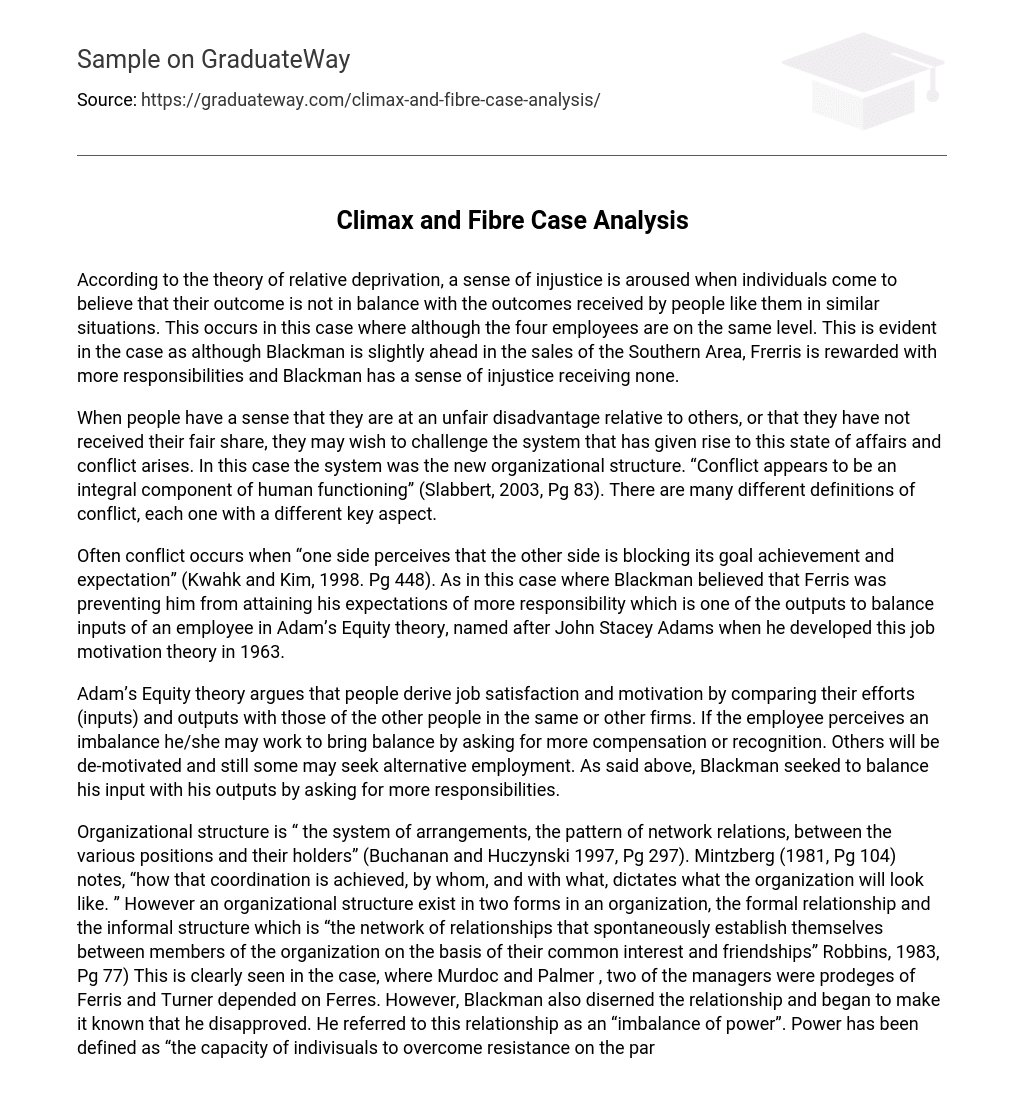According to the theory of relative deprivation, individuals experience a sense of injustice when they believe that their outcomes are not equal to those of similar others in similar situations. This is evident in the case of the four employees who are all on the same level. Although Blackman has slightly higher sales in the Southern Area, Frerris is given more responsibilities and Blackman feels a sense of injustice as they receive none.
When individuals believe they are unfairly disadvantaged or have not received their fair share, they may seek to challenge the system that has caused this conflict. In this scenario, the system in question was the new organizational structure. According to Slabbert (2003, Pg 83), conflict seems to be a fundamental aspect of human behavior. Various definitions of conflict exist, each highlighting a different essential element.
Conflict often arises when one party perceives that the other party is hindering their ability to achieve their goals and meet their expectations. This perception of goal obstruction is a common trigger for conflict (pg 448). In this case, Blackman felt that Ferris was blocking his progress and preventing him from gaining more responsibility. According to Kwahk and Kim (1998), Blackman’s expectations align with the concept of balancing inputs and outputs in Adam’s Equity theory, which was developed by John Stacey Adams in 1963 as a theory of job motivation.
According to Adam’s Equity theory, individuals find job satisfaction and motivation by comparing their efforts (inputs) and outcomes with others in the same organization or industry. If an employee perceives an imbalance, they may strive to restore equity by requesting additional compensation or recognition. This can result in demotivation for some individuals, while others may opt to pursue alternative employment. As mentioned earlier, Blackman sought to achieve balance between his input and output by requesting increased responsibilities.
According to Buchanan and Huczynski (1997, Pg 297), organizational structure refers to the system of arrangements and network relations between positions and their holders. Mintzberg (1981, Pg 104) emphasizes that the coordination and methods used in achieving it determine the appearance of the organization. There are two forms of organizational structure: formal relationships and informal networks, as described by Robbins (1983, Pg 77). In this case, Murdoc and Palmer, both managers, were under the influence of Ferris and Turner, creating a dependency. However, Blackman noticed this relationship and expressed disapproval due to what he perceived as an “imbalance of power”. Power is defined as the ability to overcome resistance, exert one’s will, and achieve desired results (Dahl in Buchanan & Huczynski, 2004, Pg 828).
According to Melia & Peiro (1984), power can be classified into two types: formal power, which originates from one’s position within the organization, and informal power, which arises from personal relationships and characteristics. They clarify that formal power exists in a hierarchical organization where superiors have control over their subordinates but not vice versa. In contrast, informal power is not necessarily linked to the formal structure and can flow in any direction, although it is influenced by one’s hierarchical position.
According to Management Fundamentals by Robert. N. Lussier, the degree of power within a hierarchy can vary between individuals in the same position due to their personal relationships. Politics is defined as the process of gaining and using power. Dependency is described as B’s relationship to A when A has something that B needs. In this case, Ferris gained power because Turner was dependent on him for information and skills.





